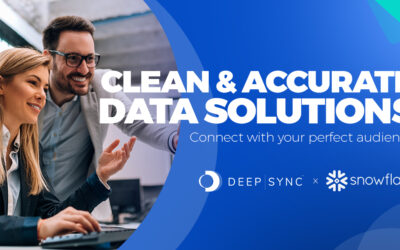Collecting donor data is essential to your organization’s fundraising strategy. By better understanding your target audience, you’ll be well-positioned to tap into their preferences and unique motivations for supporting your organization. As a result, you can optimize your fundraising strategy so donors will feel more inclined to give year after year.
With your CRM or fundraising software, you can actively track donor metrics like demographics, donation histories, engagement, and supporter interests. However, some nonprofits struggle to determine whether they’re using these data points effectively to drive fundraising success.
Explore these essential ways to incorporate donor data into your fundraising strategy:
- Reflect on past fundraising performance
- Conduct prospect research
- Create targeted communications
- Develop marketing campaigns tailored to your audience
By keeping your donor data clean and up to date, you can leverage these metrics in your solicitation strategy, donor recognition strategy, and more. Work with fundraising software that can grow with your organization and help you manage multiple events and campaigns. According to the OneCause guide to fundraising software, the right technology solution should come with a variety of analytics and reporting tools to support your fundraising efforts.
Reflect on past fundraising performance
The best donor insights come from your past fundraising events and campaigns. After all, you can’t enhance your fundraising strategy without a concrete understanding of what’s going well and where you can improve.
Let’s say your nonprofit recently hosted a remote silent auction and you want to assess your virtual fundraising progress.
Using your fundraising software, you could look at the following data metrics:
- Average bidding amount
- Number of bids placed per item
- Number of registrants versus active bidders
- Number of existing supporters that attended versus new supporters
- Total amount raised
This data can help reframe your fundraising approach at your next virtual auction. For example, if certain items received fewer bids than others, focus on procuring items that more closely align with supporters’ interests. Similarly, if your nonprofit had a low turnout rate and struggled with engaging its audience, develop a multichannel marketing strategy and incorporate gamification to keep motivations high.
Conduct prospect research
Prospect research allows you to do a deep dive into donors’ motivations and wealth markers so you can identify their likelihood to give and improve your solicitations. Look at philanthropic and wealth indicators, involvement in other nonprofits, and past giving behavior.
For instance, you can collect data points based on the following factors:
- Occupation
- Political giving
- Real estate ownership
- Frequency, recency, and amount of donors’ past contributions
- Donations given to other charitable organizations
- Business affiliations
While it’s easy to track donors’ activity within your organization, it may be difficult to find some of these other metrics. Your organization can work with an append service to fill in missing data points like contact, demographic, or geographic information for your supporters.
Gathering this information can help you pinpoint people’s willingness and capacity to give. For instance, you can identify supporters with a higher likelihood of becoming major donors and create appeals to upgrade their donation amount. Or, if supporters give frequently but not monthly, you can request that they become monthly donors and explain the elevated impact this would have on your mission.
Create targeted communications
By segmenting your donors into groups based on similar characteristics, you can create personalized and highly relevant donation appeals. These will inspire donors to not only read your requests to give—but also act on them.
According to Kwala’s guide to donor communications, you can segment your emails based on data points like:
- Age
- Donation frequency, recency, and amount
- Location
- Volunteer status
Use a fundraising platform or email marketing platform to automate messages and make sending them a smooth experience. While you can lean on technology to help power your messages, ensure there’s a personal touch in each communication.
Your donation appeals should have the following key features:
- Personalized salutation. Rather than emailing donors with a generic greeting like “Dear Donor,” your salutation should include the donor’s preferred name. This personal greeting makes them more likely to open and read your communication. Remember to check for typos, too. No one wants to receive an appeal with their name spelled incorrectly!
- Reference to past nonprofit involvement. Before jumping into your donation appeal, take the time to thank your donors for their past contributions and show how they have made a difference. For example, you might cite the fundraising amount your donor raised during your last peer-to-peer fundraiser and how this advanced your mission.
- The purpose behind your appeal. Be transparent and explain why your nonprofit is asking for a specific donation amount. If you’re running a fundraising campaign or event, let your donors know how the funds raised will support your beneficiaries and uplift the community.
- Clear call to action. Give supporters a clear way to donate. For example, provide a link to your event landing page website or your nonprofit’s donation form. Express urgency by using phrases like “Donate now” or “Give by midnight” so donors act quickly.
- Personal statement of gratitude. Thank donors for their ongoing support and demonstrate that you value their contributions to your organization. When donors feel appreciated and recognized, they’re more likely to continue supporting your nonprofit.
As you send communications to your different donor segments, actively monitor metrics like open rate, read rate, and donor conversion rate. These metrics will help you recognize whether you need to modify your email content or adjust your segments to more directly target certain types of donors.
Develop marketing campaigns tailored to your audience
Leading up to your next charity auction, peer-to-peer fundraiser, or other campaign, send donors a survey asking about their interests in your organization and their communication preferences. You can then leverage this information in your marketing messages so you know the best way to reach them and motivate them to give.
For example, if a donor always opens your text messages but rarely looks at your email communications, you can note that information in your CRM and focus your communication efforts on creating engaging texts that solicit donations and promote your next campaign.
You can also get a better understanding of your donors’ interests by looking at marketing metrics. For instance, take a look at email clickthrough rates, social media likes and shares, text message read rates, and more. These metrics will inform the type of content that is most likely to resonate with donors and further their involvement in your fundraising event or campaign. You can also correlate this data with other characteristics—like age or preferred type of involvement—to continue refining your segments and outreach strategies over time.
To maximize the success of your next fundraiser, you’ll need a concrete plan. The best fundraising strategies are informed by data, so you can effectively motivate donors to help your nonprofit cross the fundraising finish line. Find a leading fundraising software, so you can collect data insights and manage donor information with ease.
About the Author
Sarah Sebastian is the Director of Corporate Communications at OneCause. She’s a marketer and brand geek at heart with eight years of experience in the nonprofit tech space. Outside of work, Sarah can be found reading, hiking, kayaking, volunteering for Florida Access Network, or getting lost in the woods while photographing birds.












0 Comments